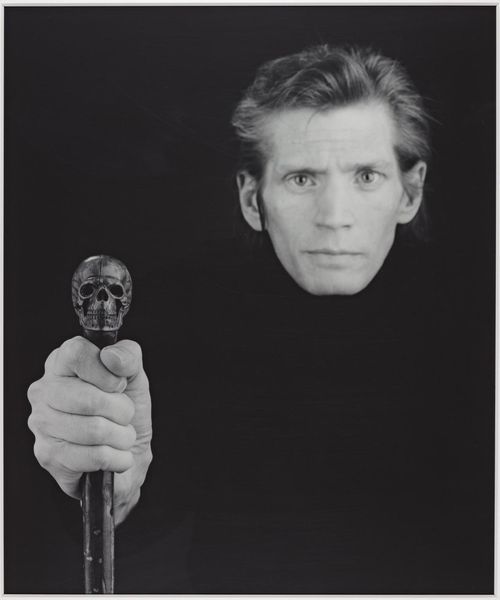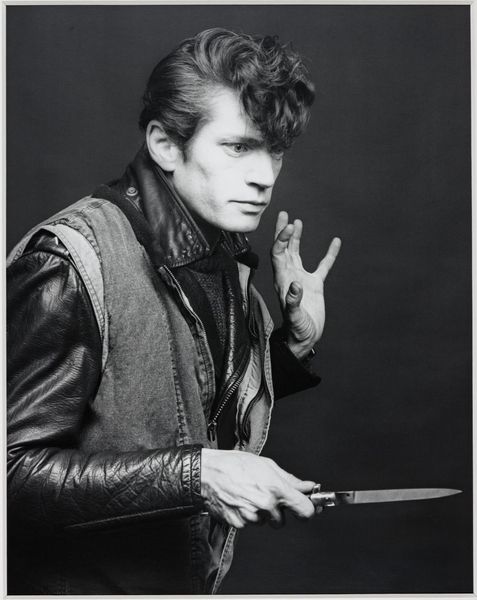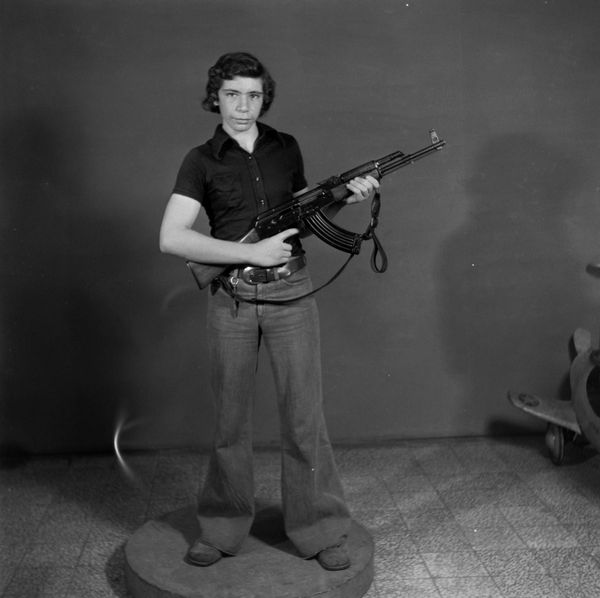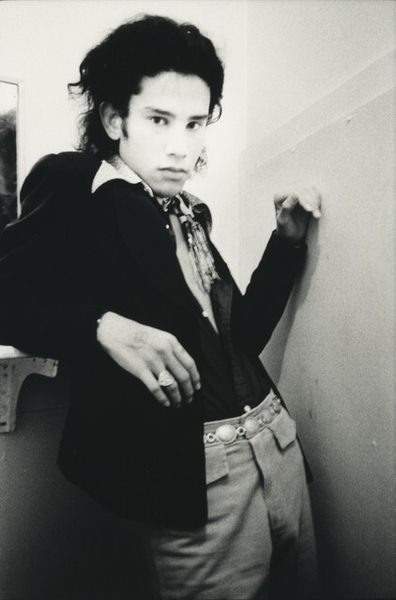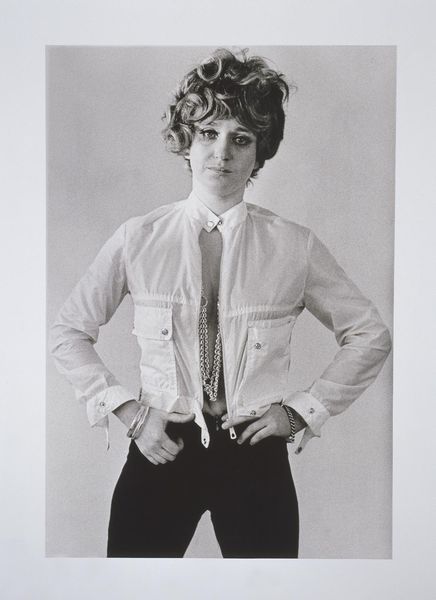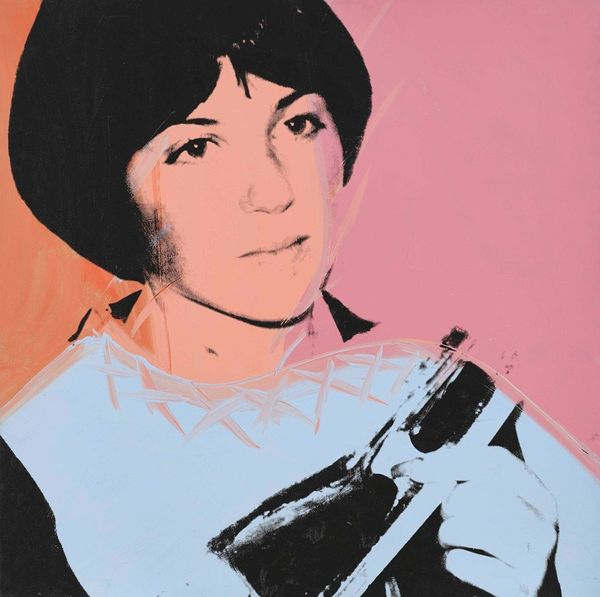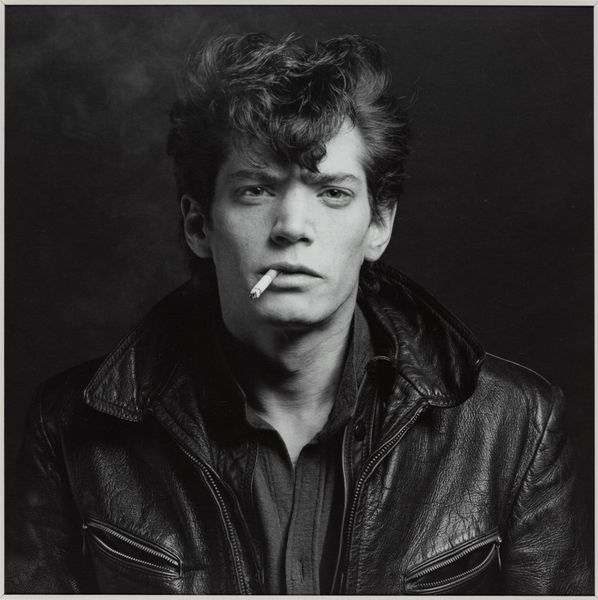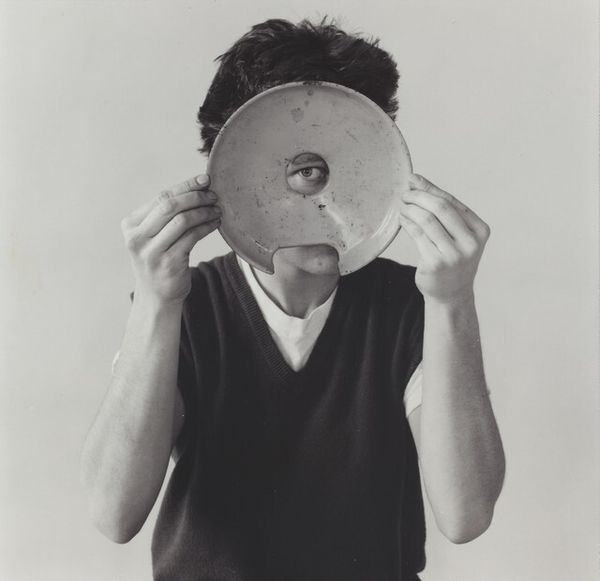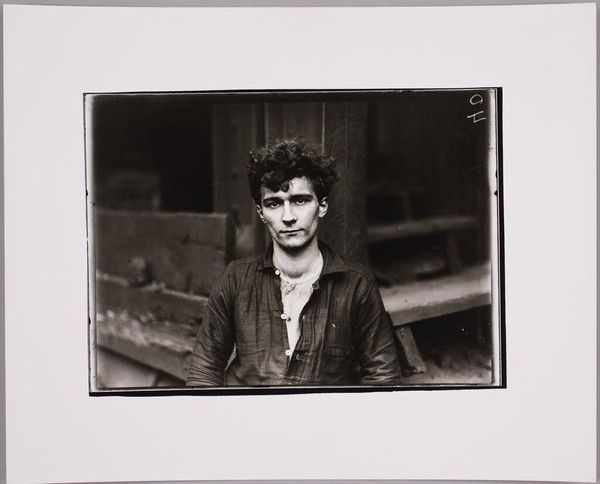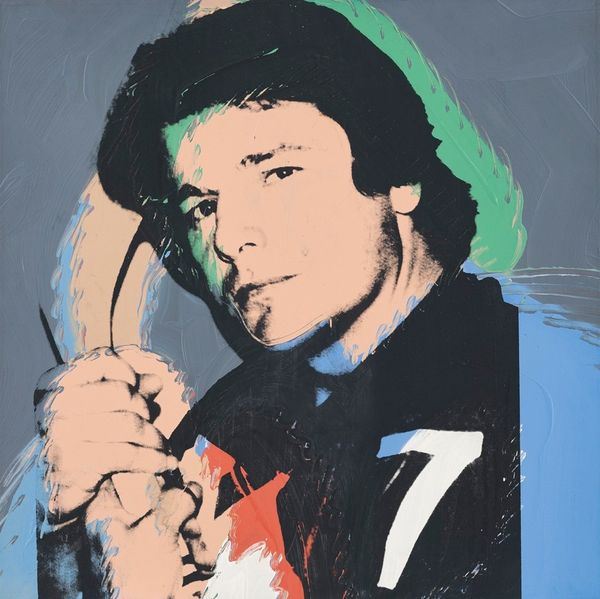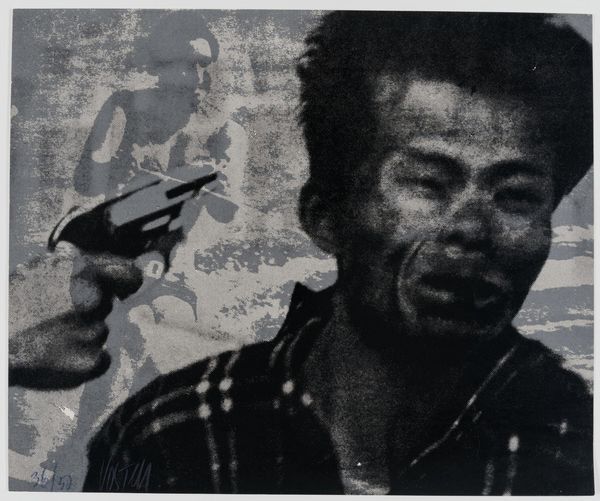
Dimensions: support: 374 x 375 mm frame: 716 x 692 x 28 mm
Copyright: © Robert Mapplethorpe Foundation | CC-BY-NC-ND 4.0 DEED, Photo: Tate
Editor: So, this is Robert Mapplethorpe’s self-portrait. No date is specified. It's striking. The leather jacket, the gun, the pentagram... it’s aggressive, but also theatrical. What's your take on it? Curator: It's a provocative piece, isn't it? Mapplethorpe was always pushing boundaries, challenging conventions. The pentagram and the gun, especially in the context of the AIDS crisis and the moral panics of the time, seem to me like acts of defiance. What do you think he was defying? Editor: Maybe societal expectations? He was openly gay during a time of intense homophobia. Curator: Exactly. This self-portrait can be seen as a form of self-defense, a refusal to be silenced or erased. The power dynamics at play are really fascinating. Editor: I hadn't thought of it that way. Seeing it as a response to the societal pressures shifts my understanding entirely. Curator: It's about situating the work within its historical and cultural context. It’s a lens into Mapplethorpe’s fight for visibility and acceptance.
Comments
tate 6 months ago
⋮
http://www.tate.org.uk/art/artworks/mapplethorpe-self-portrait-ar00226
Join the conversation
Join millions of artists and users on Artera today and experience the ultimate creative platform.
tate 6 months ago
⋮
In this black and white self-portrait Robert Mapplethorpe stands in front of one of his constructions, Black Star 1983, which consists of a black-painted frame in the shape of a five-pointed star or pentagram. Mapplethorpe poses in a dark leather coat and gloves, clutching a submachine gun which he points slightly upwards to his left. Underneath his leather coat Mapplethorpe is wearing a wing-collared shirt and a white bowtie. Mapplethorpe stands straight on and looks directly at the camera. The photograph is cropped just below the artist’s waist. The self-portrait is based on a famous 1974 publicity image of the newspaper heiress Patty Hearst holding a submachine gun with the symbol of the Symbionese Liberation Army on the wall behind her. Hearst gained notoriety that year after being kidnapped by – and subsequently joining – the American left-wing revolutionary group.
